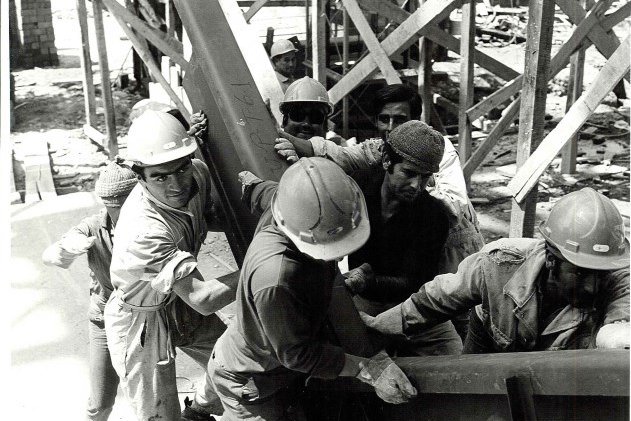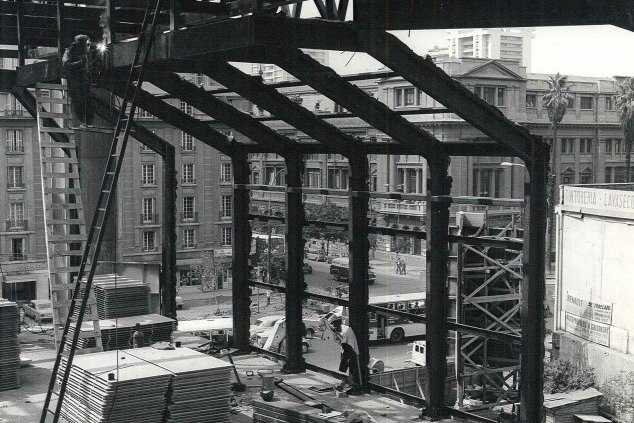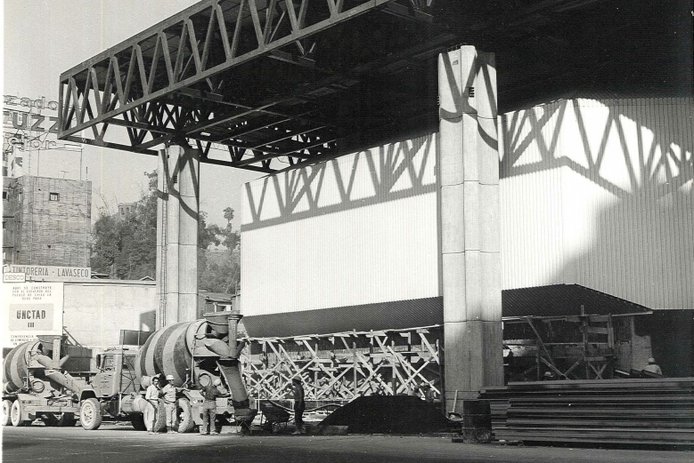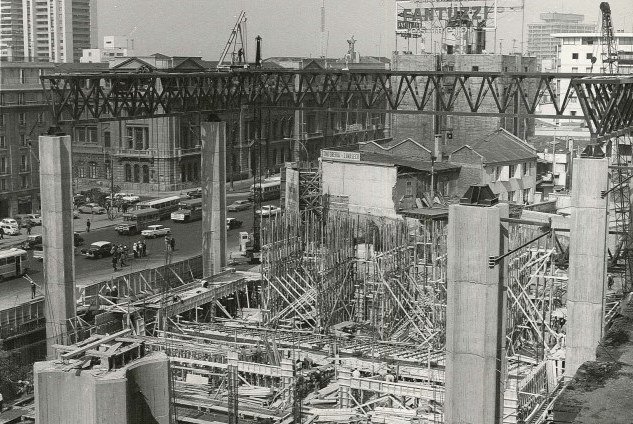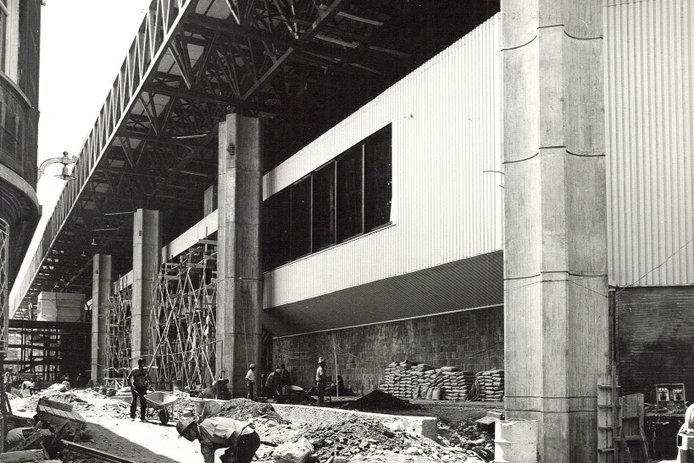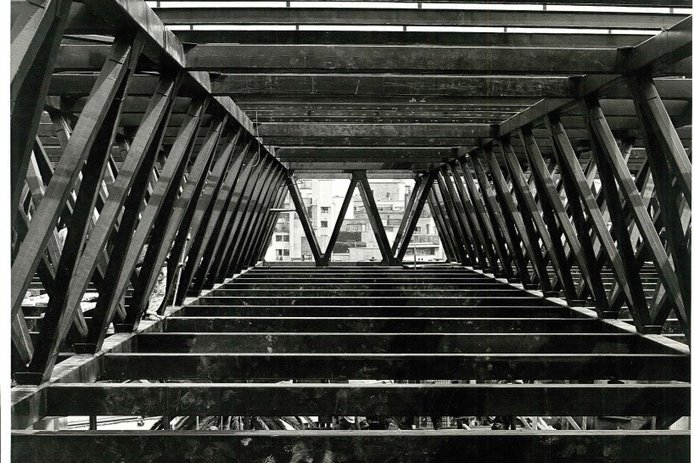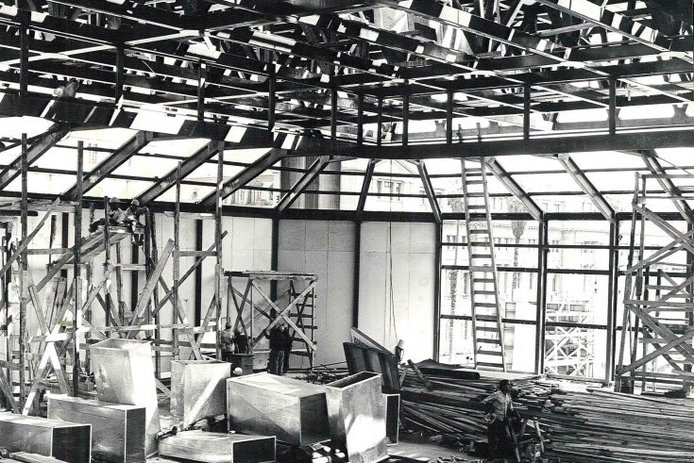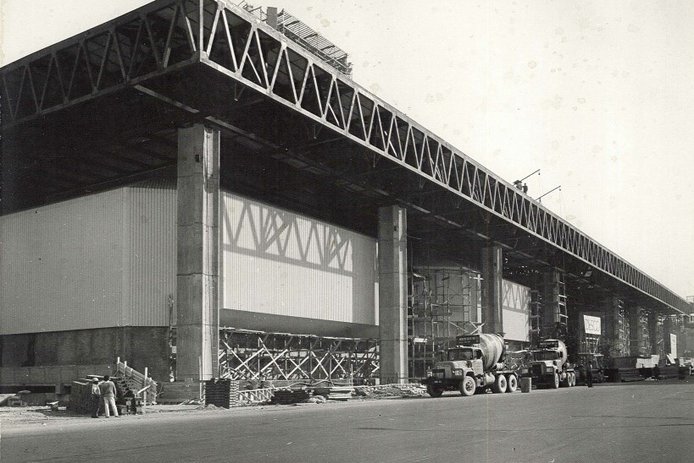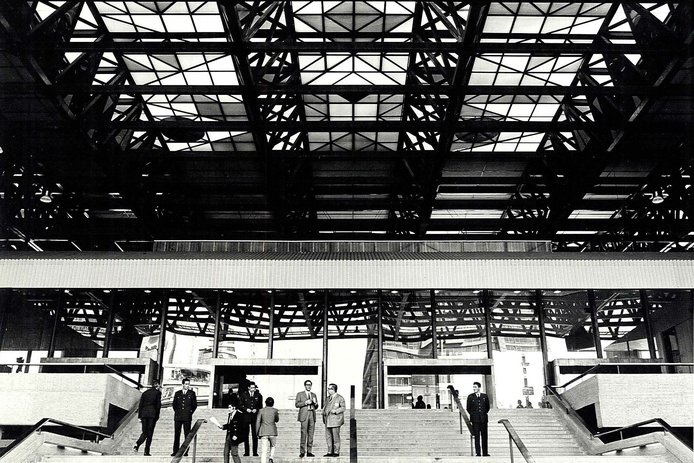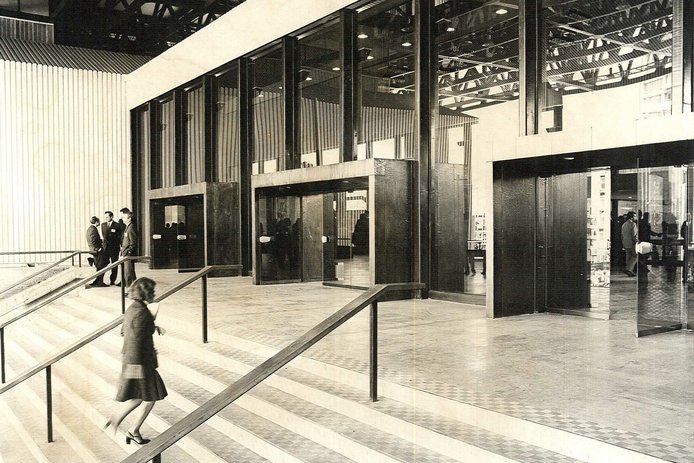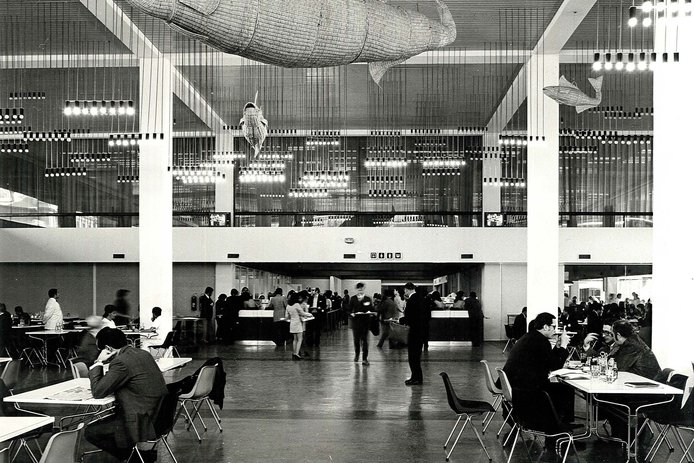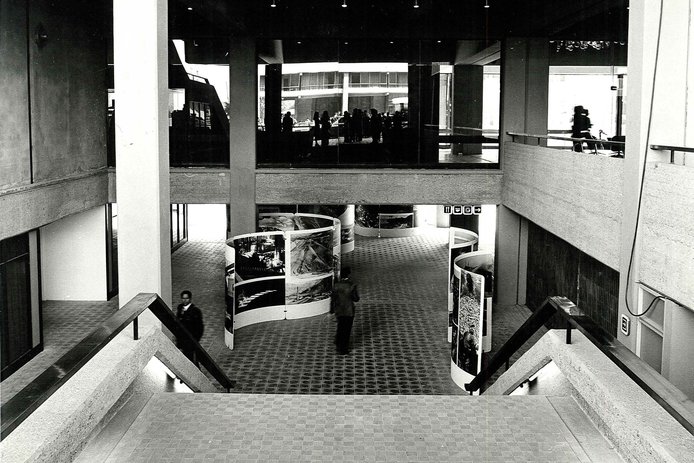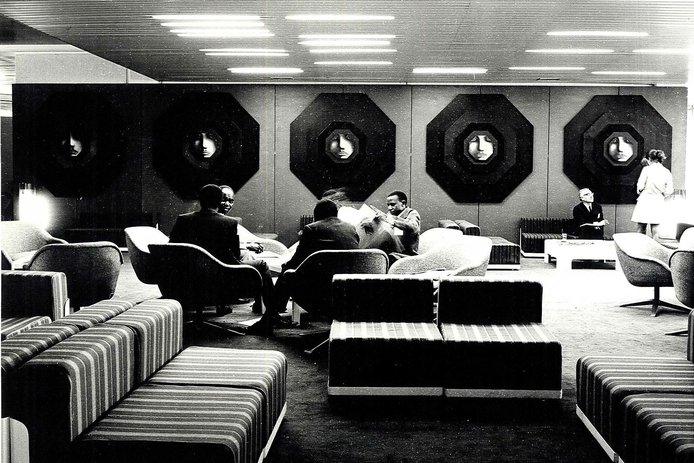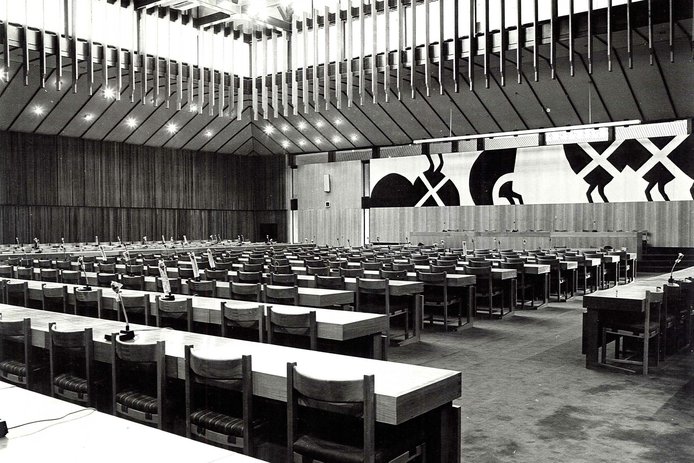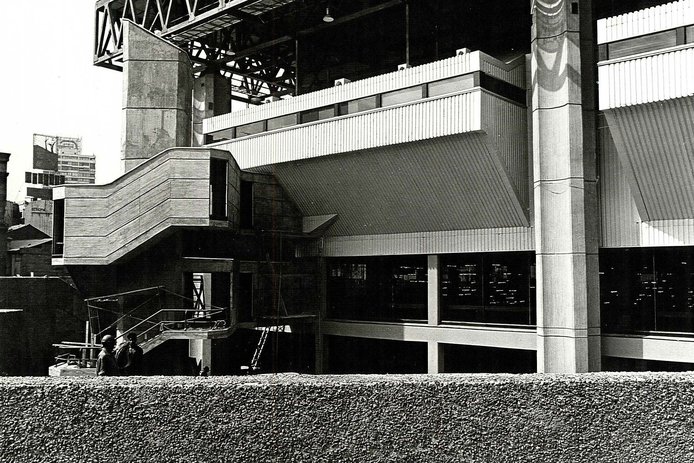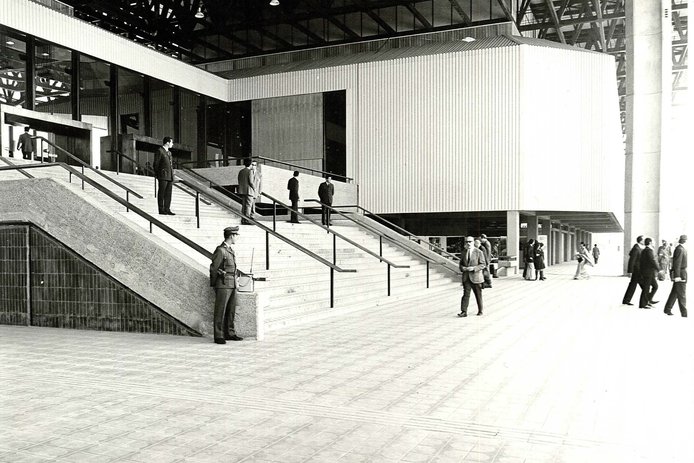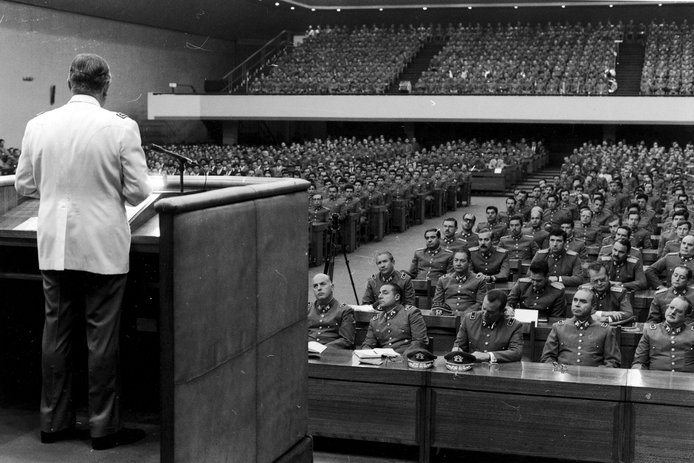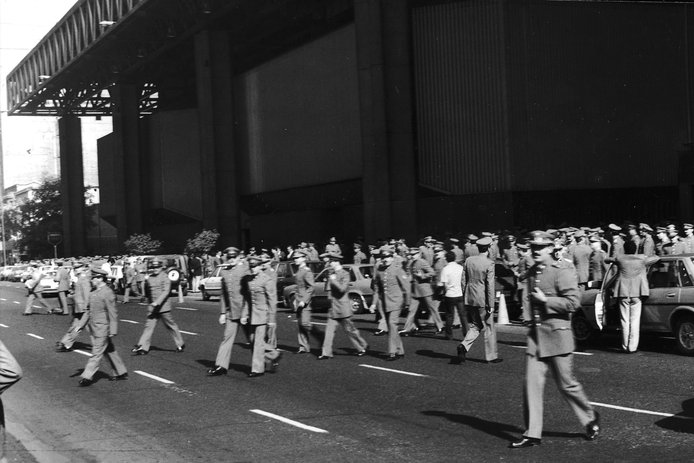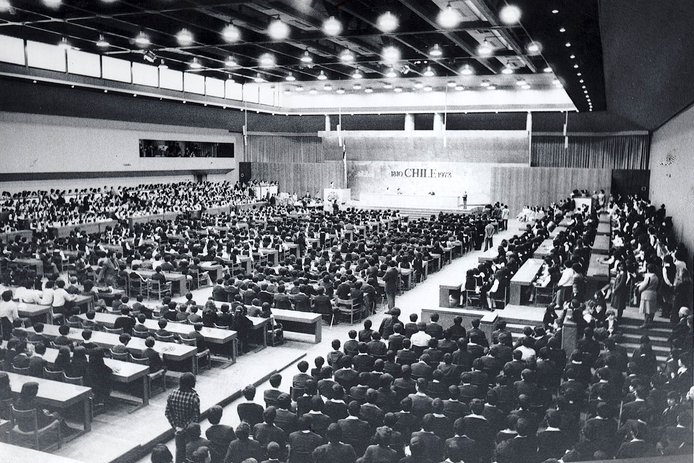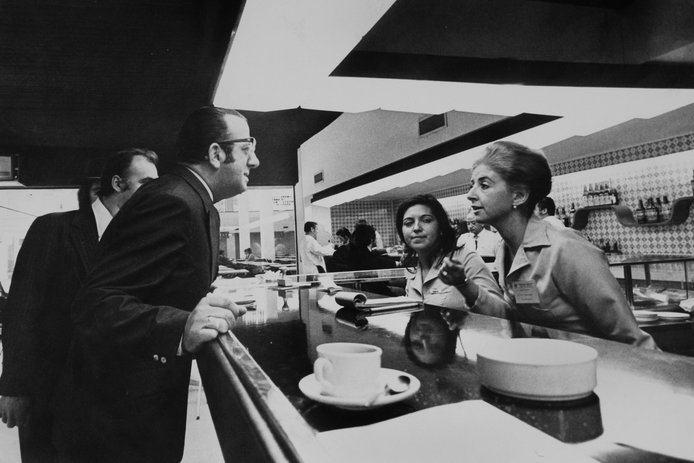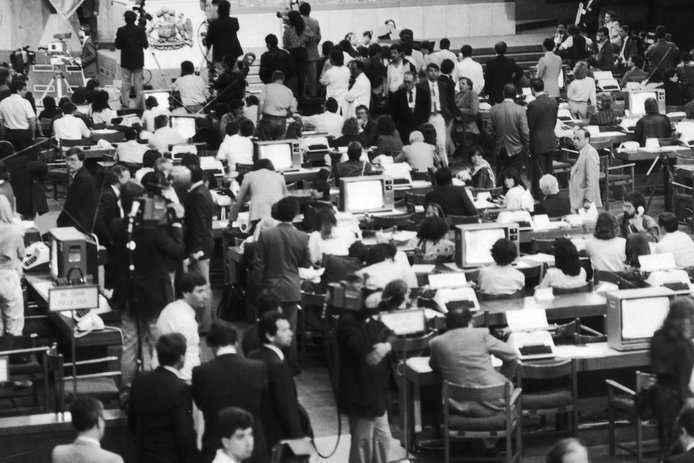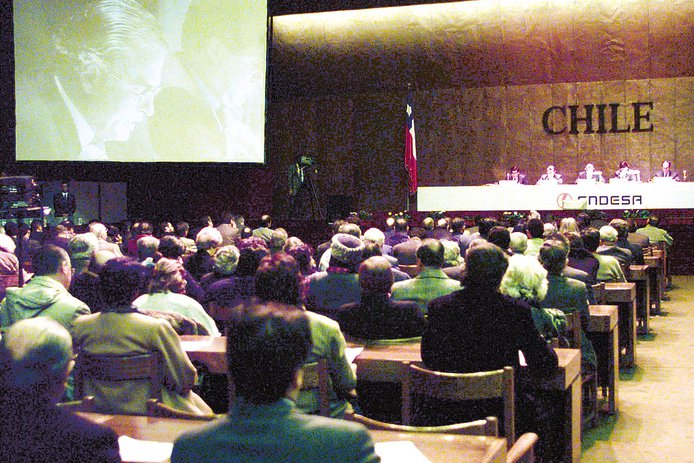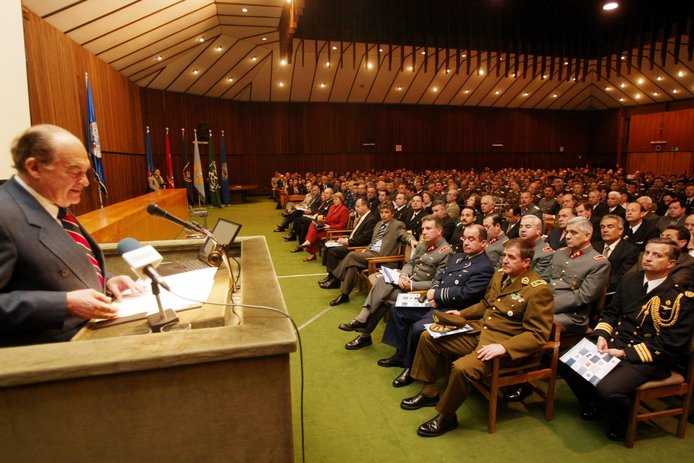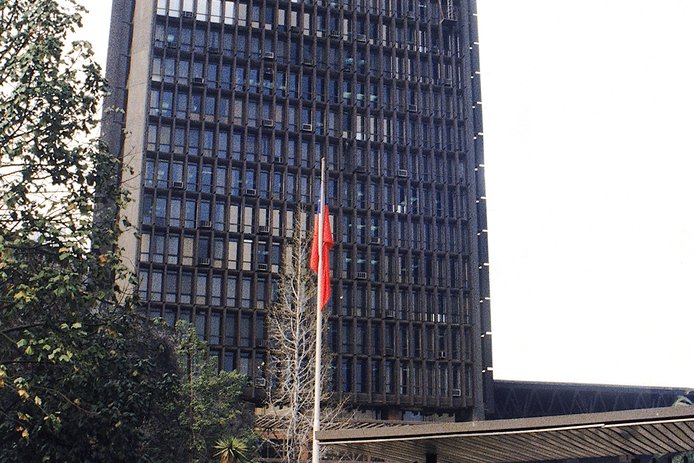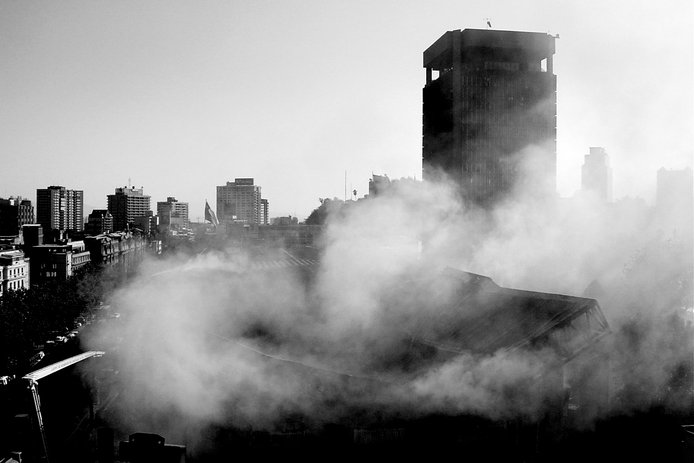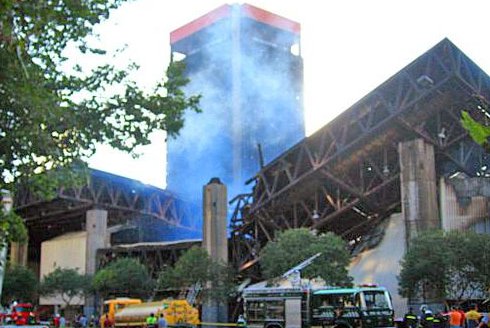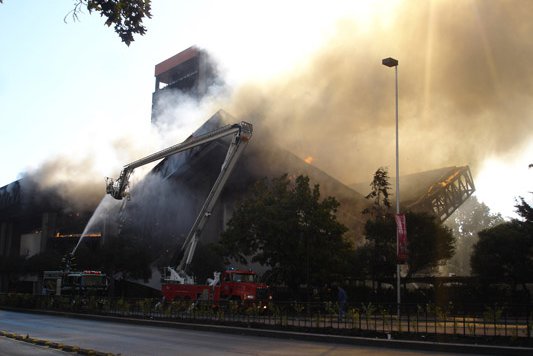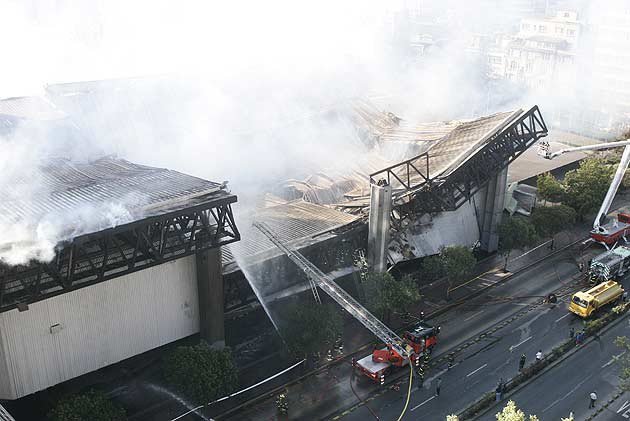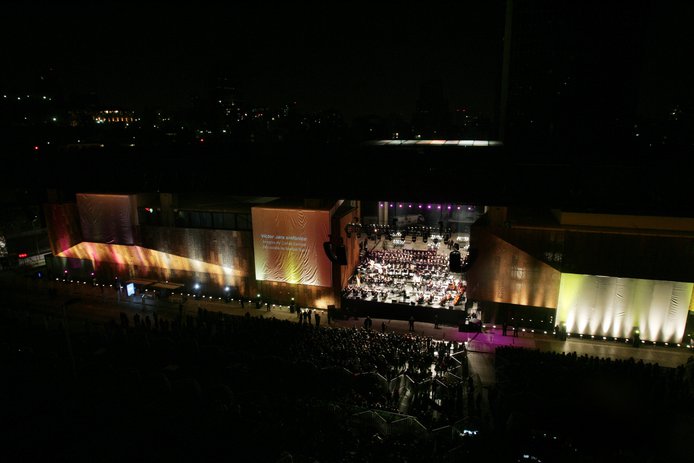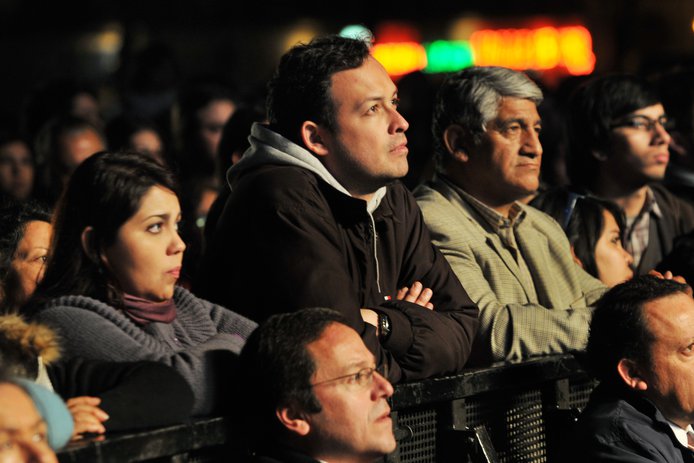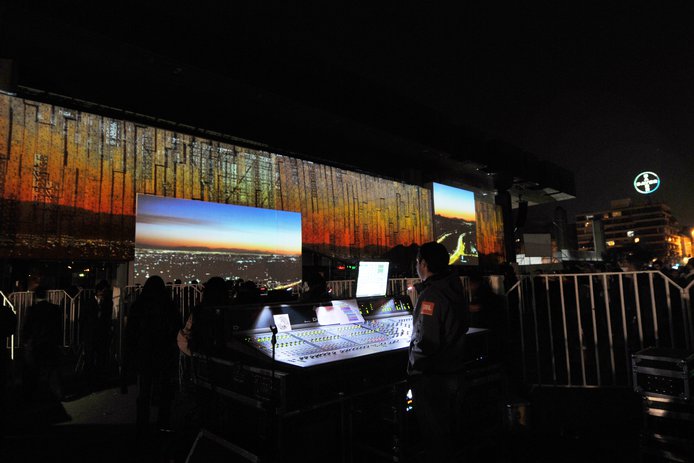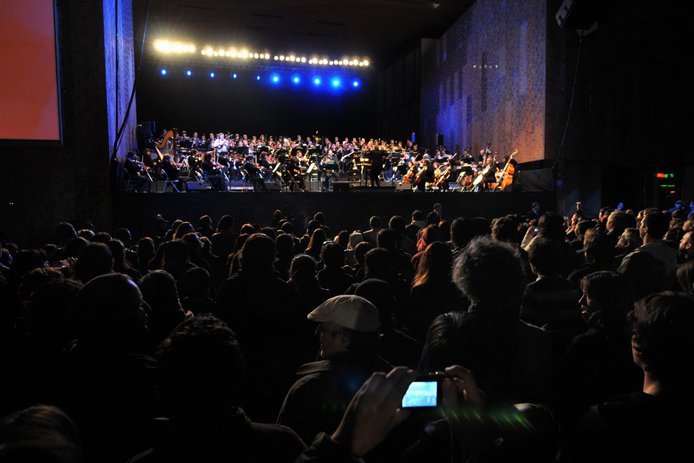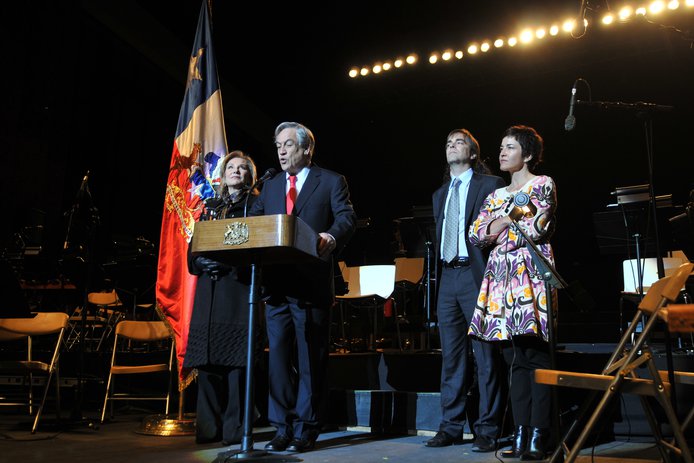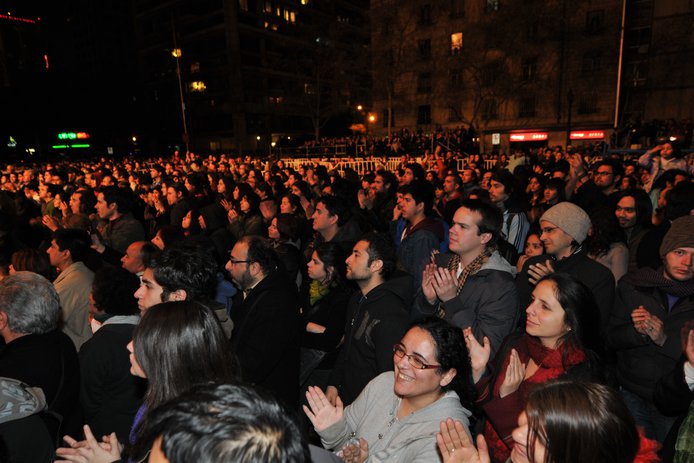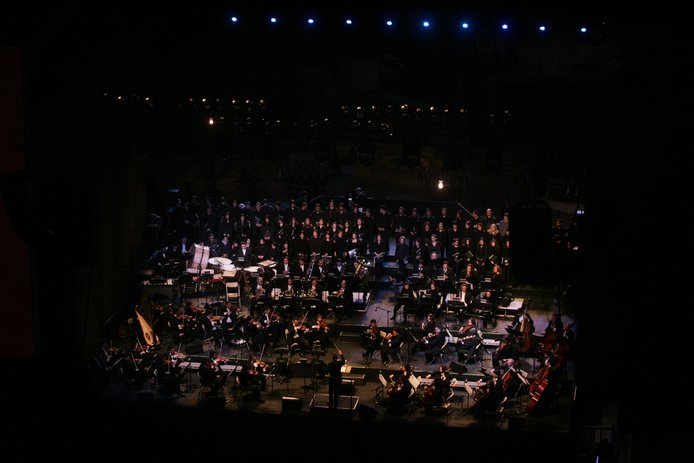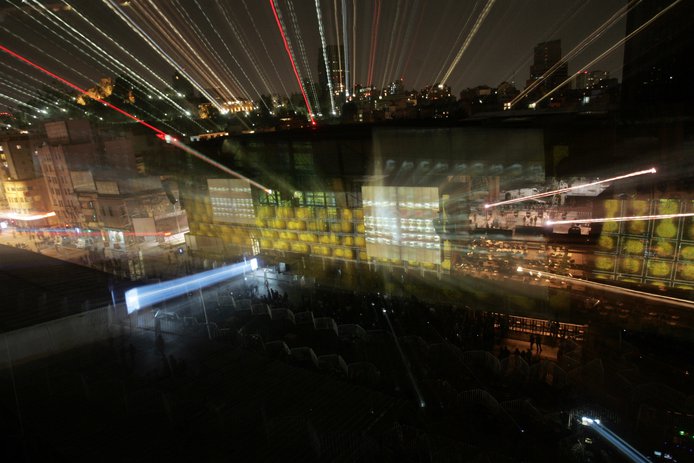History
An important part of Chile’s recent history is contained among the walls of the GAM building. Its successive stages symbolize the social and political changes the country has gone through. Repairing and appreciating national memory are integral parts of GAM’s refoundation as an historical landmark for Santiago.
It’s placed on an historical building in the center of Santiago, opened in 1972 as the locale for the third United Nations Conference on Trade and Development, UNCTAD III, where conversations were held on how to overcome poverty in underdeveloped countries. It was built during Salvador Allende’s government in a record time of 275 days. It was a Latin American milestone of architectural modernity and constructivist utopia. A wide spectrum of Chilean society was involved in its design and construction, and after UNCTAD III, they claimed it as their own as a meeting point under the name of Centro Cultural Metropolitano Gabriela Mistral.
After the military coup of September 1973, the junta decided to close the place and used it as their headquarters under the name of Edificio Diego Portales. With the return to democracy, in 1989, the space became the locale of choice for congresses and meetings; the tower in the back became the seat of the Defense Ministry.
Early in year 2006, a fire destroyed part of the construction, an accident that pushed Michelle Bachelet’s government to reconsider its original purpose and return it to the Chilean citizens. It reconstruction reached 22,000 square-feet that are an example of transparency and openness to the city. It was baptized again in September 2010 as Centro Cultural Gabriela Mistral, GAM, to address its history and project from that time and place its relationship with the citizens and its surroundings.
Archivo de Arte y Arquitectura
Revisa el Archivo Digital GAM que provee libre acceso para consulta a los archivos patrimoniales de interés público sobre la UNCTAD III. Es una investigación archivística centrada en los años 71 y 72, que incluye más de 600 documentos, entre publicaciones de prensa, fotografias, documentos oficiales, maquetas de obras y material audiovisual.
1972 UNCTAD III
On April 3, 1972, the majestic building for the third United Nations Conference on Trade and Development, UNCTAD III, was inaugurated. It was an example of hard work: in just 275 days, architects José Covacevic, Hugo Gaggiero, José Medina, Juan Echenique and Sergio González Espinoza coordinated a team of workers and voluntaries, working shifts of even 12 hours each day. “Chile is worldly committed,” president Salvador Allende exhorted the workers, days before the building was finished. “It’s the word of the country speaking through its workers, technicians and business men, and that word must be kept.”
The promise was kept. And the country celebrated the effort. 3,000 delegates from 140 countries attended the conference. A stone by sculptor Samuel Román, now lost, marked the words that marked its foundation: “This building reflects the working spirit, the creative ability and effort of Chilean People, represented by its workers, its technicians, its artists and its professionals.”
Once the congress was finished, the building was managed by the Ministry of Education under the name Centro Cultural Metropolitano Gabriela Mistral. For little more than a year it was an active place for the encounter of citizens and a cultural center.
Extracto de documental de Ignacio Agüero, que reconstruye su historia: los tijerales de 1972, encabezados por el presidente Salvador Allende; el primer reportaje televisivo al interior del edificio sobre la colección de arte donada al edificio; el discurso de Augusto Pinochet el 11 de septiembre de 1974 en el desaparecido Salón Plenario; la rutina del edificio Diego Portales bajo ocupación militar, y el incendio de marzo de 2006, que selló la refundación para la ciudanía y la cultura del Centro GAM.
Discurso de inauguración del Edificio de la UNCTAD III del Presidente de la República, Salvador Allende Gossens, 3 de abril de 1972.
1973 Diego Portales Building
A decree-law dictated by the junta just three months after the military coup of September 11, 1973, turned the cultural center in the headquarters of the new military government, which changed its name to Diego Portales Building.
Until 1981 it was the seat of executive and legislative powers and its salons became strategic and secured spaces for the decisions of the military junta. The building was forbidden to public, its exterior was covered with fences and the better part of its art collection was taken away, destroyed and dispersed.
In 1981 the offices of the government returned to the Palacio de La Moneda and the building remained the headquarters of the legislative power. Its plenary salon was the usual place for the speeches Augusto Pinochet gave on national TV.
Later the Diego Portales Building became the center for the press during the 1988 plebiscite and the place from whence the historical announcement than confirmed the People’s resolution to finish the dictatorship and regain democracy.
Since 1990, during the government of Patricio Aylwin, the building served as a center for conferences and conventions, and one of its towers became the seat of the Ministry of Defense.
2006 Refoundation
On March 2006 a violent fire destroyed part of the building and this gave the government of Michelle Bachelet the idea of renewing the building, returning it to its initial purpose and give it back to the citizens as a cultural center.
The great plenary salon, with a capacity for more than 2,000 people, was the the severely affected by the flames which on that fateful March 5 destroyed the eastern side of the building. A 40% of the building was damaged, not considering the partial destruction of the white and blue salons and the collapse of the roof’s metallic structure. The fire mobilized 300 hundred firemen who, in their final report, declared that the reason for the the fire was the overheating of the building’s electric system.
Once the damage was established and the rubble was cleared, Michelle Bachelet’s government opened a consultation among ministries to decide what to do with the infrastructure. A committee formed by the ministries of Housing, National Assets, Education and Defense launched an international architecture call to redesign the building. The rules of this call specifically spoke about the need to recover the original meaning of the space and “return to the citizenship a building created for the People.” On December 2007, it was announced that the winner were the offices of Cristián Fernández arquitectos asociados and Lateral Arquitectura, chosen from a pool of 55 projects.
Architect Miguel Lawner, who personally coordinated the building teams in 1972 was one of the main characters of the rebirth of the Gabriela Mistral center. Together with other original workers from the 1972 effort to erect the UNCTAD III building, he opposed the tender and defended the reorientation as a cultural center. “Only a few times it can be said that the People made a building its own. We trust that the same original spirit will animate this new Gabriela Mistral center in this historical stage of its rebirth,” he declared during the Architecture and Memory seminar, conducted during GAM’s inauguration.
2010 Gabriela Mistral Center
7,000 people celebrated the center’s reopening together with government authorities and protagonists of the cultural world.
The building of the cultural center served as the background for visual projections and a concert that recreated symphonic versions from the catalog of Violeta Parra and Víctor Jara by the Universidad de Concepción Orchestra (under the direction of Rodolfo Fischer,) singers Claudia Acuña and Manuel García, and the choruses from the USACH y UNAB universities.
“Tonight we only inaugurate the first stage, but we know that we have a commitment with the future stages,” explained president Sebastián Piñera, the day he inaugurated the architectural milestone of the bicentennial.
On its first remodeling stage, the center stands out for the transparency and organization projected by the building’s inner life, fusing itself with its environment routine. It’s a building connected with the city but, at the same time, capable of welcoming autonomous realities for creation and silence. Cristián Fernández, the architect in charge of remodeling, declares: “The building simply adapted itself to an urban design that, the way we see it, reestablishes the relation of the place with its context”.


